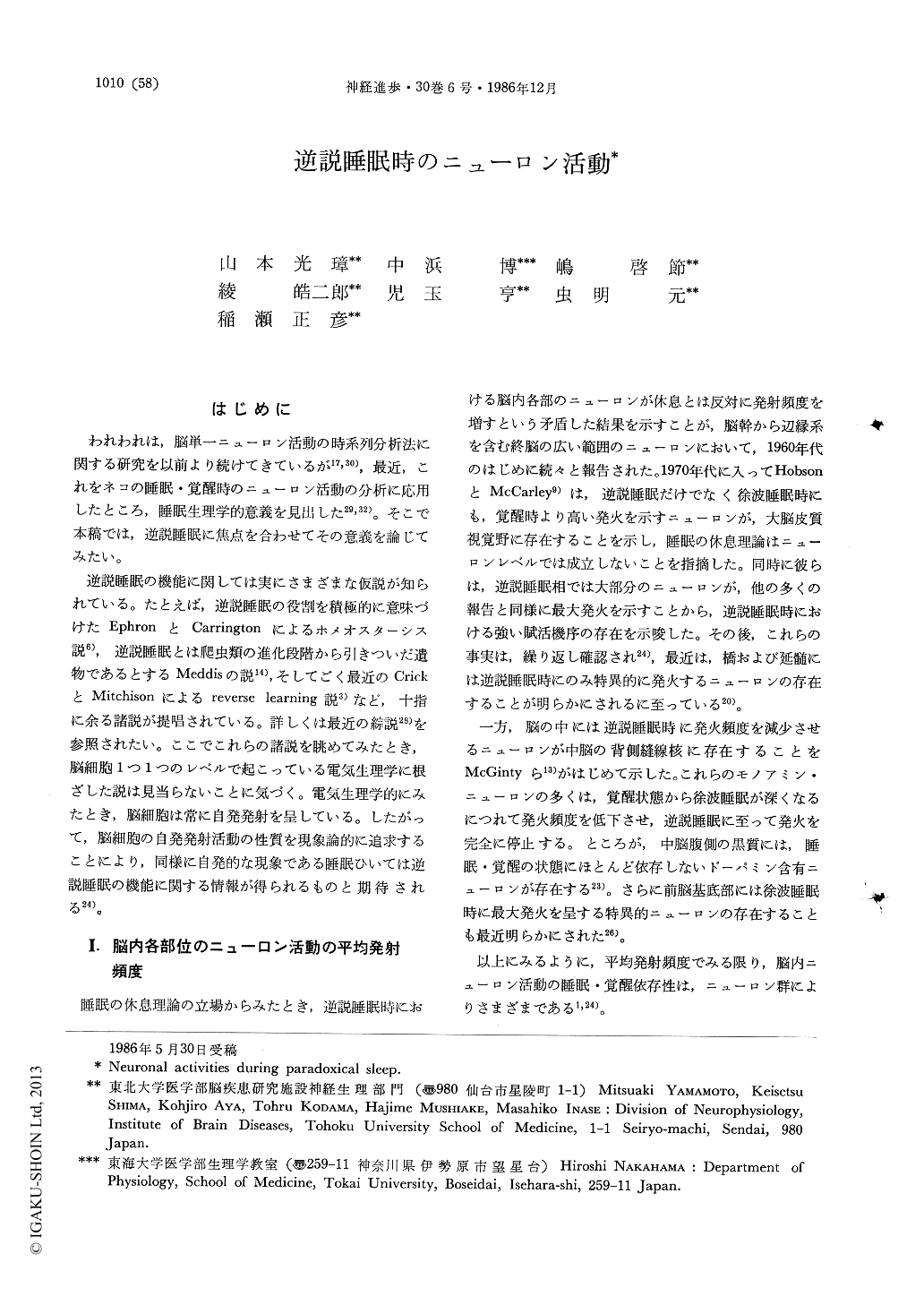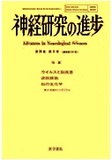Japanese
English
- 有料閲覧
- Abstract 文献概要
- 1ページ目 Look Inside
はじめに
われわれは,脳単一ニューロン活動の時系列分析法に関する研究を以前より続けてきているが17,30),最近,これをネコの睡眠・覚醒時のニューロン活動の分析に応用したところ,睡眠生理学的意義を見出した29,32)。そこで本稿では,逆説睡眠に焦点を合わせてその意義を論じてみたい。
逆説睡眠の機能に関しては実にさまざまな仮説が知られている。たとえば,逆説睡眠の役割を積極的に意味づけたEphronとCarringtonによるホメオスターシス説6),逆説睡眠とは爬虫類の進化段階から引きついだ遺物であるとするMeddisの説14),そしてごく最近のCrickとMitchisonによるreverse learning説3)など,十指に余る諸説が提唱されている。詳しくは最近の綜説28)を参照されたい。ここでこれらの諸説を眺めてみたとき,脳細胞1つ1つのレベルで起こっている電気生理学に根ざした説は見当らないことに気づく。電気生理学的にみたとき,脳細胞は常に自発発射を呈している。したがって,脳細胞の自発発射活動の性質を現象論的に追求することにより,同様に自発的な現象である睡眠ひいては逆説睡眠の機能に関する情報が得られるものと期待される24)。
Spontaneous activities of central single neurons of a cat were recorded from mesencephalic reti-cular formation, somatosensory cortical area I, ventrobasal complex of thalamus and hippocampus during natural sleep-waking states with a head-restrained condition. The state of brain was monitored by electroencephalograms of somato-sensory area, hippocampus, lateral geniculate nucleus, electromyograms of neck muscles and orbicularis oculi muscle, electrooculogram, respira-tion curve and electrocardiogram. Paradoxical sleep (PS) was judged by cortical EEG desyn-chronization, continuous hippocampal theta-wave activity and complete abolition of tone in neck muscles ; slow-wave sleep (SWS), by the low-frequency and high amplitude cortical EEG with fewer spindle bursts; and highly attentive state (BW) with sustained attention to a pair of small birds in a cage, by cortical EEG desynchronization and the high EMG activity in orbicularis oculi muscles. These three states were considered to be at least quasi-stationary.

Copyright © 1986, Igaku-Shoin Ltd. All rights reserved.


